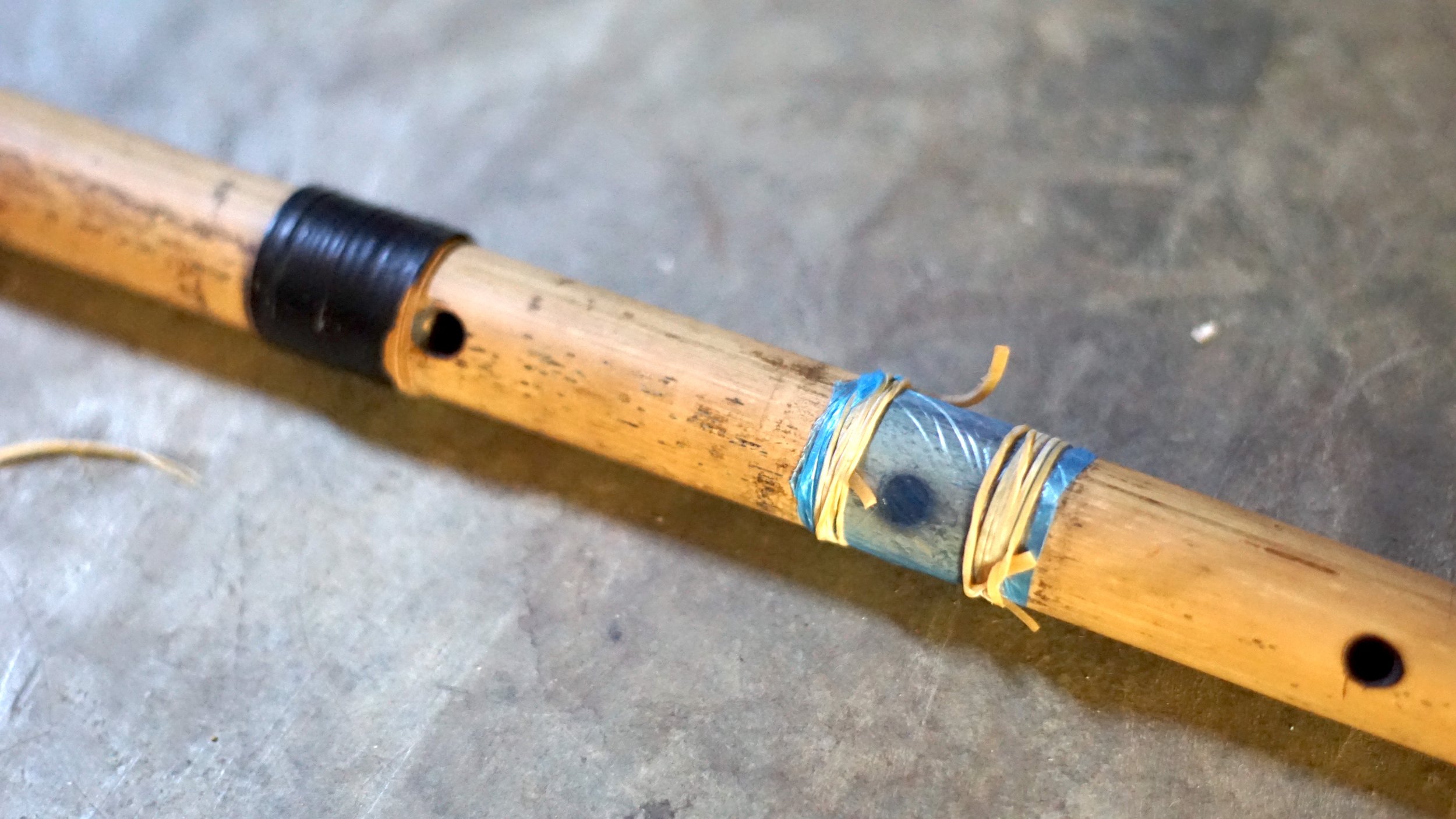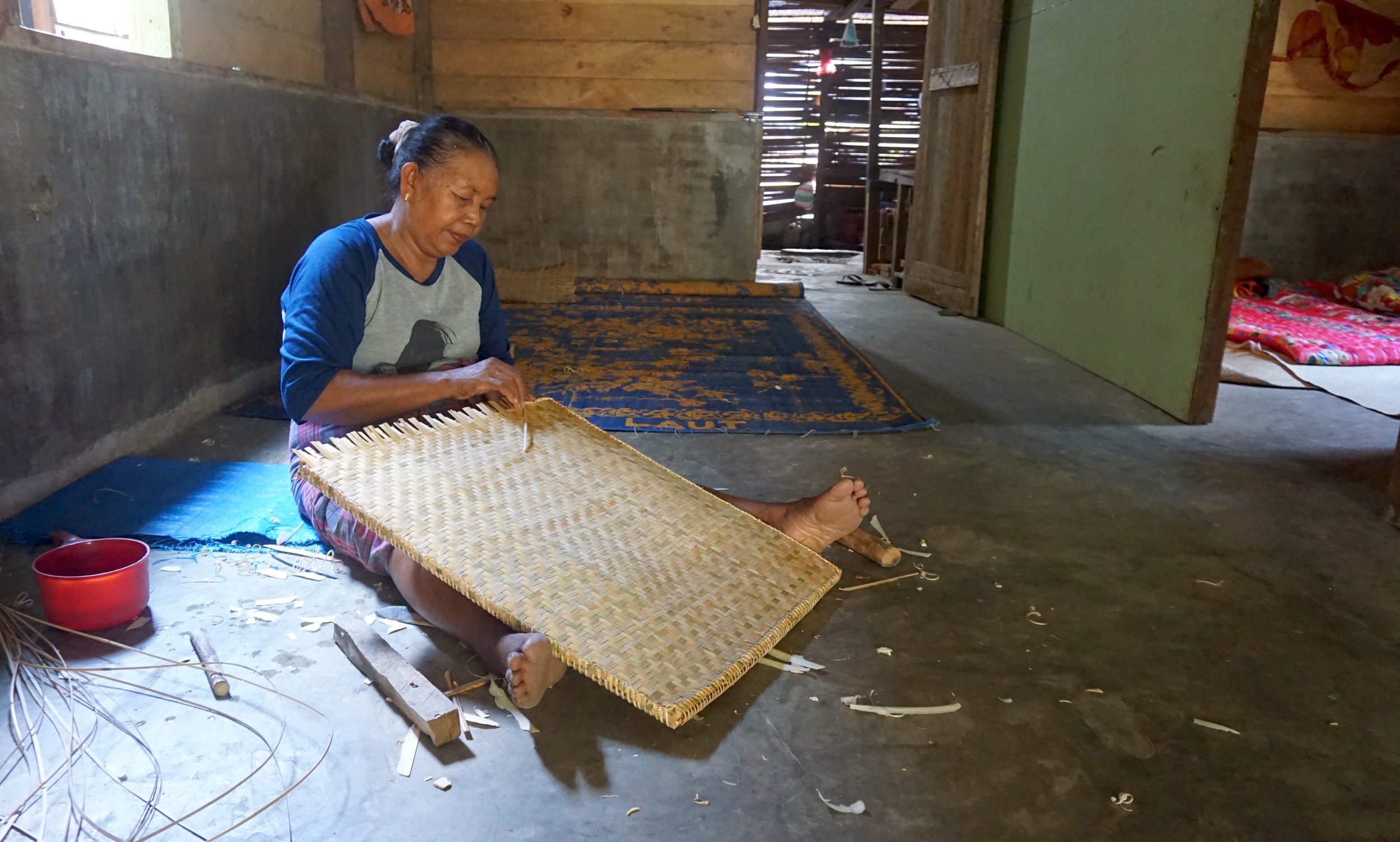Alas Ethnic Minority Music of Aceh: Bangsi Alas
Location: Kuta Cingkam, Kec. Lawe Alas, Kab. Aceh Tenggara
Sound: Bangsi Alas (also spelled bansi Alas)
One more post from that land of musical treasures, the Alas Valley of Southeast Aceh, the northernmost province of Sumatra. In just a few short days there, I managed to record and learn about so many rare and beautiful musical traditions, from modern kecapi lutes to canang situ sardine tin ensembles and canang buluh tube zithers. While so far we’ve dealt with women’s music, today we’ll shift focus and explore one of the only Alas musical instruments played by men, the bamboo flute called bangsi.
Search for the instrument on YouTube and you’ll find that nearly every grainy, camera phone-shot video is of one man, the maestro Pak Rabatin from the village of Kuta Cingkam, a tiny hamlet near the Alas River (Lawe Alas) that gives the Alas people their name. Armed with just the name of the village from a YouTube video description box, my wife Sinta and I set off on our rental motorbike from the jungle homestay where we’d be trekking in search of orangutans later in the week. Zooming down dusty roads lined by rice paddies fed by the river, we eventually found what Google Maps assured us was the village, a cluster of houses arranged around a narrow footpath. Dismounting and asking the first person I saw (with a little mimed flute playing thrown in!), we were immediately pointed to a small village-style warung kopi with young men sitting about playing cards on bamboo mats and blasting dangdut.
Sure enough, sitting shirtless in a sarung on a little woven-bamboo porch off to the side of the warung kopi was the man himself, Pak Rabatin. We ordered some ice tea from the warung, sat down and introduced ourselves. Pak Rabatin himself could barely speak Indonesian, so another local, Pak Hajidil, took it upon himself to be our translator and all-around interpreter. After explaining that we’d seen him on YouTube, we watched as Pak Rabatin, looking pleased, went into the house, coming back with a shirt on and a bangsi in his hand.
The instrument itself was quite a sight, though at a quick glance you’d be mistaken for thinking it’s just a bamboo flute like all the other suling documented at Aural Archipelago over the years. However, I’d find, the bangsi is another strange outlier amongst the handful of idiosyncratic pieces in the Alas instrumentarium.
Instruments with similar names are found all across Sumatra and even as far as the Philippines - the name bangsi comes from classical Malay, which in turn is from the Sanskrit वंशी or vaṃśī. In form, it’s an end-blown duct flute similar in some ways to the Western recorder, a flute type also played by neighbors across the border in North Sumatra (see the Karo balobat, or Pakpak lobat). Quite unlike the most common flute type in Indonesia, the ring flute, the bangsi is closed off at the bottom by the natural node of the bamboo plant (though here the node had a hole which had been cleverly plugged by Pak Rabatin with a sliver of orange soap!)
It’s unclear whether the bangsi would be classified as an internal or external duct flute (organologists chime in!) - two holes are made near the top of the flute, with one covered by a wound bit of dried pandan leaf (daun pandan); within the flute, a cork-like substance is shoved into the space between these two holes. Sound is then produced when air is forced up past the cork, slipping through the “duct” created by the pandan leaf and over the sharpened edge of the lower hole (the “window” in recorder terminology). I belief this kind of duct system is also used in other Sumatran flutes like the rather rare Pakpak taratoa of the nearby Dairi region and even the saluang Pauh of West Sumatra (just for context, Swedish ethnologist Kaudern spent a whole few pages puzzling over such a flute found in Sulawesi in the 1920s!)
Finally, in addition to the six fingerholes below, an extra hole is carved squarely in the center of the flute and covered by a bit of plastic (Pak Rabatin called it solasiban) held on with rubber bands (in the past, they would have covered it with daun rumbiah) This membrane vibrates when the bangsi is played, almost like in a kazoo, giving it a unique timbre (mesakhe.)
As Pak Rabatin explained, bangsi was once a common plaything back in his youth in the 1970’s. “We were kids - we’d sit by the side of the rice fields and play bangsi to amuse ourselves - back then we didn’t have TV, didn’t have phones, didn’t yet know [Western] music…” Nowadays, Pak Rabatin is called to play bangsi mostly for the two great ritual events of Alas cultural life - the wedding party and the circumcision party. All those YouTube videos I’d seen? Almost surely at a party, explaining why his bangsi was almost always mic’ed up and played through an overdriven, reverb-dripping sound system.
Pak Rabatin’s description of crafting a bangsi was pretty straightforward - take a bit of thin bamboo (bambu tipis), chop it down and dry it for around a month before burning in the finger holes with a hot iron. However, Pak Rabatin confirmed a rumor I’d read elsewhere, that in the past there was a far more mystical method of construction. If you wanted a bangsi to sound properly, the instrument maker would wait for a death in the village before burning in a single sound hole. With each death, a new hole would be burned until the flute was finally ready to be sounded. Remarkably, I’d heard exactly the same story when speaking with maestros of the Minangkabau flute saluang sirompak nearly 700 kilometers away in West Sumatra. I’ve speculated on a possible link between Minangkabau and Alas music and culture before, but this similarity is still remarkable. Regardless of a direct link between the traditions, it points to a general culture of mysticism and magic that is often tied to flute traditions in cultures across Sumatra.
Unsurprisingly perhaps given this history, the pieces Pak Rabatin played on the bangsi were undeniably of a melancholy character. As he explained, each piece played on the bangsi is essentially an instrumental take on lagam, a kind of Alas oral poetry with rhyming couplets not unlike the Malay pantun. By following the melodic contours of these story-filled lagam, each bangsi piece translates the story into pure sound. While Pak Rabatin isn’t a lagam expert and so couldn’t give me a word-for-word example, each lagam that he played was a match for some doleful memory from his past.
In “Jage Pekhik” (“Guarding [The Fields] From Birds”), Pak Rabatin’s melody echoed a lagam about a young boy (strongly implied to be the musician himself) living in a bamboo hut by the rice paddies in the hunger-filled days before the harvest. Day and night, “with an empty stomach,” he’d sit and guard the harvest from the pesky birds (pekhik), knowing that if he were to fail and the crops were to be eaten, he and his family would starve.
In another, “Tandang Mendem,” (literally “Sleep Visit”), Pak Rabitin outlined another rather self-referential lagam. In the Alas courting ritual called tandang mendem, young boys and girls would be given the opportunity to have a sleepover at the house of a potential lover in the next village over. In this version, again strongly implied to be about Pak Rabatin himself, a young boy visits the object of his affection in the night and plays his bangsi for her. Wrapped up in this lagam is all the feelings of insecurity as he plays - I’m just a humble boy from the sticks, coming to you with only my bangsi! How could I possibly get a girl like you? And yet, Pak Hajidil hinted, pointing at Pak Rabatin’s wife weaving a bamboo selamponen mat the next room over, he got the girl in the end!
In these stories, the bangsi is a clear link to an era long past - an era of hardship, clearly, but also one in which Alas customs (adat) like tandang mendem, still held firm, and an Alas girl really could be wooed by the sound of a lonely bamboo flute. I often meet this kind of bittersweet nostalgia when talking to musicians in Indonesia, but rarely are these feelings so clearly expressed in the music itself, the instrument and its sounds forming a profound link with Alas lifeways that are fading fast and, almost inevitably, bringing the music itself with them into oblivion. “It’s enough to bring a tear to his eyes as he plays,” Pak Hajidil said, shaking his head. In the moment, Pak Rabatin remained stoic, but he’d spoken through his music tales of longing - longing for sustenance, longing for love, but also longing for a way of life that will never return.





